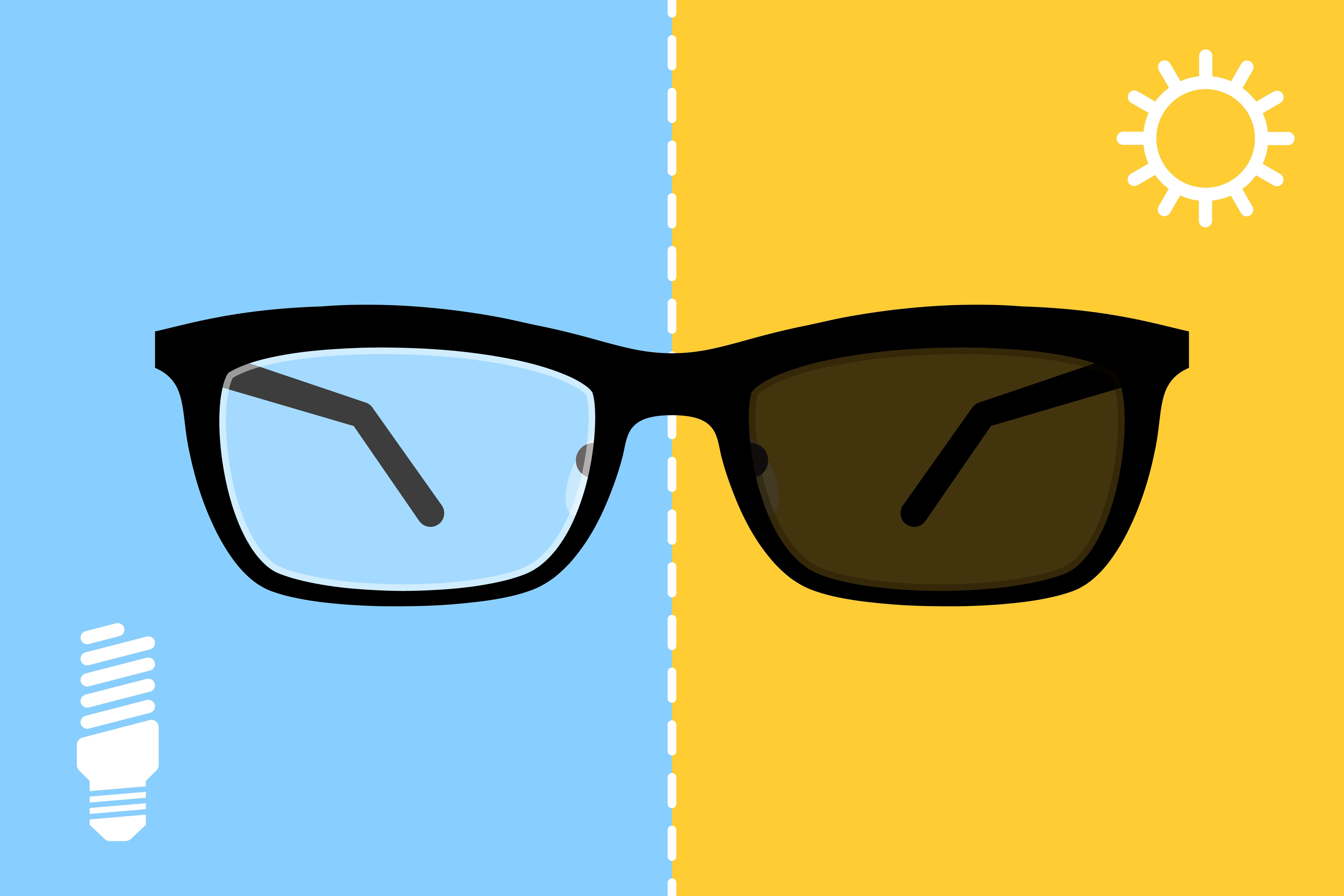
Transition lenses, also known as photochromic lenses, are specially designed eyeglass lenses that darken when exposed to specific types of light, most commonly ultraviolet (UV) radiation. Once the light source is no longer present, the lenses return to their clear state.
The science behind transition lenses is intriguing. The lenses are embedded with millions of organic, carbon-based molecules that react to UV light. When exposed to UV rays, these molecules change shape, absorbing the light and darkening the lens. This reaction is what allows the lenses to adapt to different lighting conditions, providing comfort and protection for the eyes.
Top Benefits of Transition Lenses for Prescription Eyeglasses
Firstly, they offer convenience. With transition lenses, you no longer need to carry a separate pair of sunglasses. The lenses adjust to the light conditions, acting as regular glasses indoors and sunglasses outdoors. This feature is particularly useful for those who are constantly moving between different environments.
Secondly, transition lenses save you from the harmful effects of UV rays. They block 100% of UVA and UVB rays, protecting your eyes from potential damage. This feature is of utmost importance, as prolonged exposure to these harmful rays can lead to severe eye conditions such as cataracts and macular degeneration.
Lastly, transition lenses are cost-effective in the long run. Even though the initial cost may be higher than regular prescription lenses, they eliminate the need for purchasing separate prescription sunglasses. Over time, this can result in significant savings, making them an economical choice.
Transition Lenses and Eye Health
Beyond convenience and cost-effectiveness, the most significant benefit of transition lenses for prescription eyeglasses lies in promoting eye health. As mentioned, they block 100% of harmful UV rays. This protective feature is crucial as UV radiation is a leading cause of many eye conditions, from minor ones like photokeratitis (sunburn of the eyes) to more serious issues like cataracts and macular degeneration.
Additionally, transition lenses reduce eye strain. In our digital age, we spend hours staring at screens that emit high-energy visible (HEV) light, or blue light. Prolonged exposure to blue light has been linked to eye strain, headaches, and disrupted sleep. Some transition lenses are designed to block a percentage of this light, providing an additional layer of protection for your eyes.
How to Choose the Right Transition Lenses for Your Prescription Eyeglasses
Choosing the right transition lenses for your prescription eyeglasses depends on your lifestyle, comfort, and the specific needs of your eyes. If you spend a lot of time outdoors, you may benefit from transition lenses that darken quickly. For those who spend more time indoors, lenses with blue light protection may be more suitable.
When choosing transition lenses, it's also important to consider the lens color. Most transition lenses come in two colors: grey and brown. Grey lenses provide more accurate color perception, while brown lenses offer better contrast. Your choice will depend on your personal preference and the activities you typically engage in.
Finally, remember that not all transition lenses are created equal. Some brands offer better UV protection, faster transition times, and longer lifespan. Therefore, it's crucial to do your research, consult with your eye care professional, and perhaps try a few different brands before making your final decision.
Transition Lenses are a Worthy Investment for Eyeglass Wearers
The benefits of transition lenses for prescription eyeglasses are undeniable. They offer convenience, protect your eyes from harmful UV and HEV light, reduce eye strain, and save you money in the long run. They can also be tailored to your specific needs and lifestyle, ensuring you get the most out of your eyewear.
For more on the benefits of transition lenses for prescription eyeglasses, contact Manheim Family Eye Care at our office in Manheim, Pennsylvania. Call (717) 423-8400 to schedule an appointment today.








